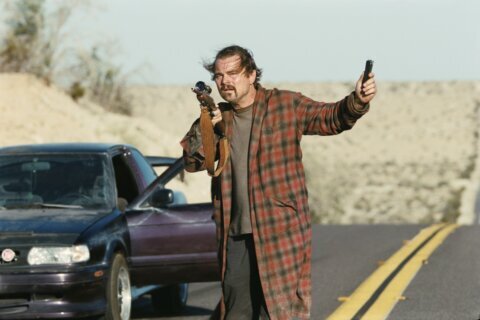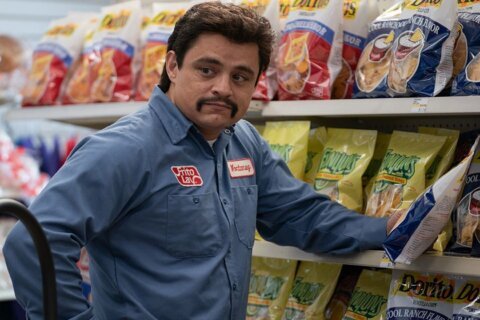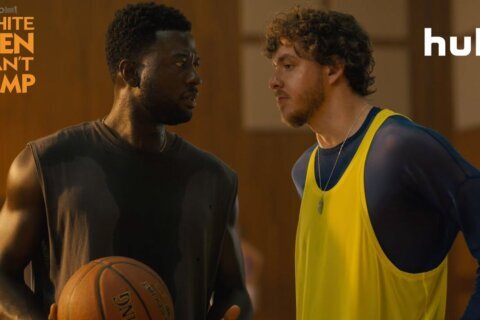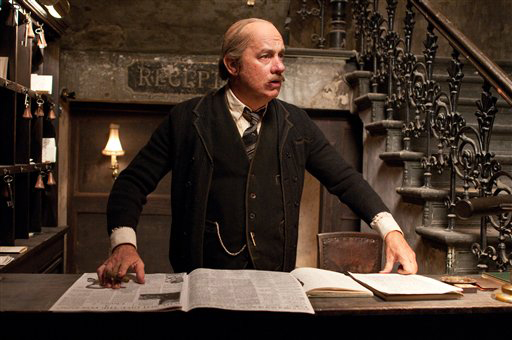
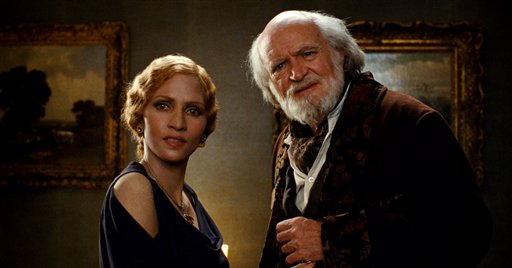
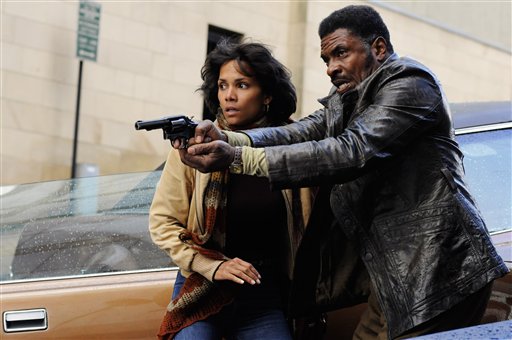
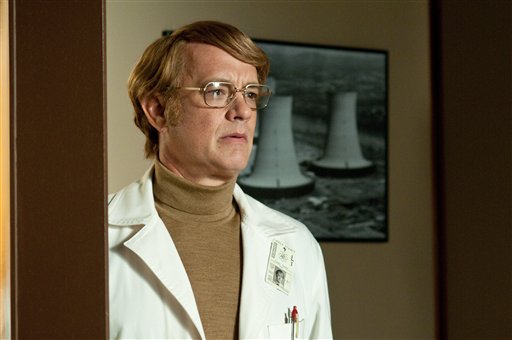
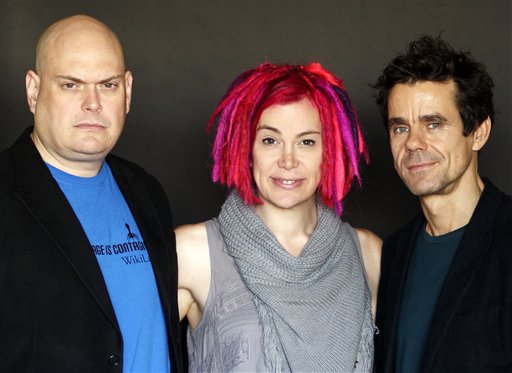
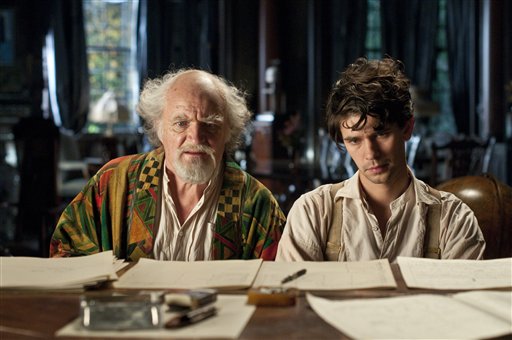
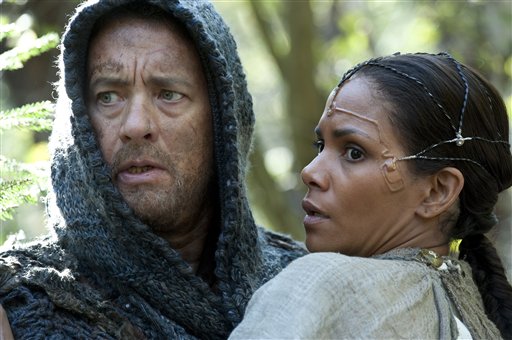
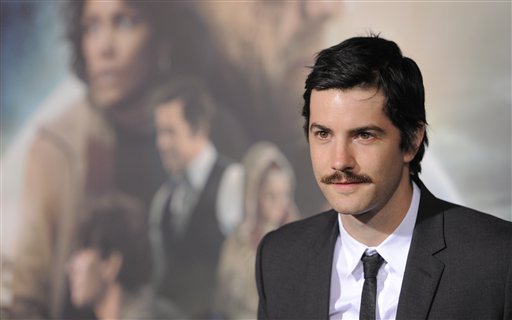
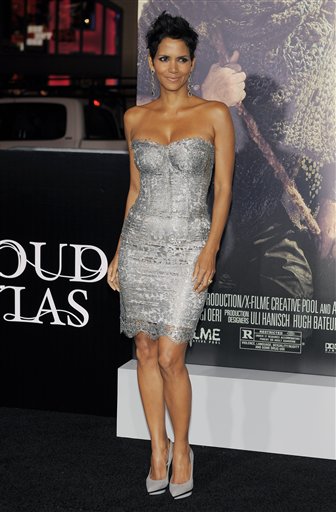
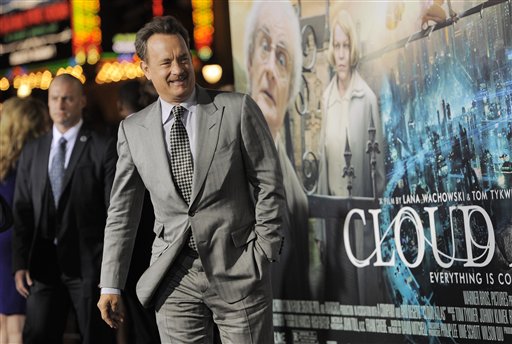
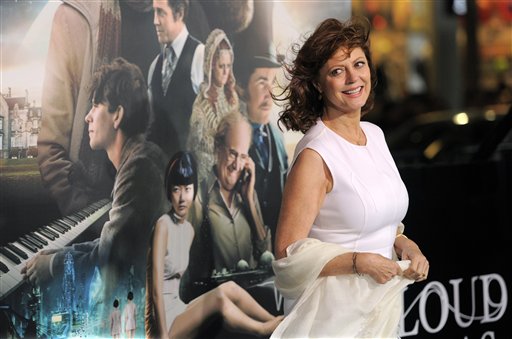
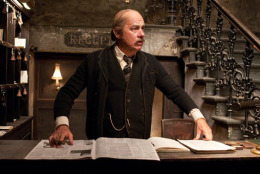
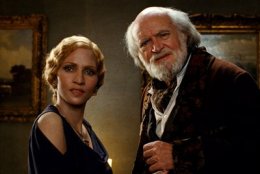
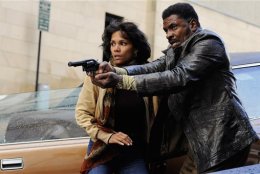
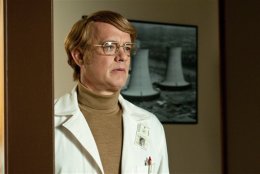
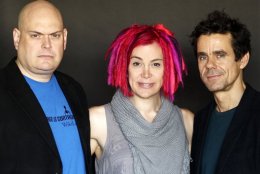
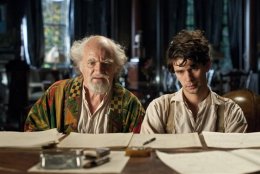
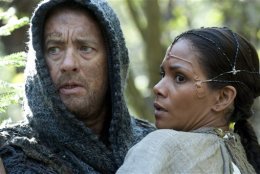
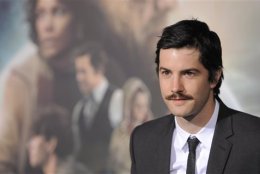
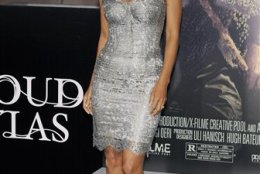
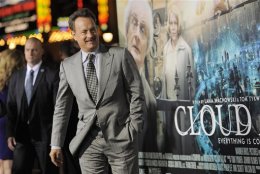
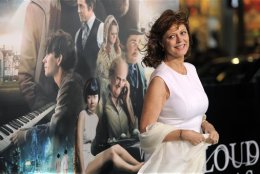
Jason Fraley, WTOP film critic
WASHINGTON – In his fall movie preview, Rolling Stone critic Peter Travers said he was “betting on Tom Tykwer teaming with the Wachowskis to create a new matrix for what film can do. Or it could suck. Place your bets.”
Indeed, “Cloud Atlas” looked awesome on paper: A trio of proven filmmakers, Tom Tykwer (“Run Lola Run”) and the Wachowski siblings (“The Matrix,” “V for Vendetta”), taking on a successful 2004 book by David Mitchell and telling an ambitious story. Six interweaving tales, each in a different time period and genre, recycling the same group of actors in different roles as their souls transfer through time, all tied together by a comet tattoo and a constant music symphony.
If executed to its potential, this project would surely be Best Picture material, a work of transcendence, a philosophical work of art with a popular enough cast to grab some mainstream appeal. The bets are placed. The time for poker-faced potential is over. Time to show your cards.
Moviegoers should have folded this hand: a literary page-turner that became a pretentious watch-checker in the movie theater, a grand experiment that proved a welcome challenge for the cast but ultimately evaded its filmmakers, and a three-hour behemoth that was far better in the trailer.
Neo and The Desert of the Real, meet Neo Seoul and The Planet of True True:
“Cloud Atlas” arrives a century after D.W. Griffith invented interwoven film storylines in “Intolerance” (1916) by staging four separate stories, in four time periods, tinted in four color film stocks.
Here, the filmmakers up the ante to six interweaving tales, each from different time periods and each in different genres. The first four are directed by Tykwer, the final two by the Wachowskis:
1) 1849: Historical Adventure: Adam Ewing (Jim Sturgess) is a good-hearted American on a ship in the South Pacific who is gradually poisoned by the wily Dr. Henry Goose (Tom Hanks). He finds friendship in a slave he witnessed being whipped and helps the slave stow away on the ship, before championing the abolitionist cause. Follows the template of “Roots” (1977), “Glory” (1989) and “Amistad” (1997).
2) 1936: Period Piece Costume Drama: Vyvyan Ayrs (Jim Broadbent) is a homosexual composer who becomes an apprentice under legendary composer Robert Frobisher (Ben Whishaw) in Cambridge. After weeks of being put down by his mentor, Ayrs scores the “Cloud Atlas Sextet” symphony, for which Frobisher immediately wants to take credit. Follows the template of “Amadeus” (1984).
3) 1973: Political Mystery: Luisa Rey (Halle Berry) is an investigative reporter in San Francisco, who tries living up to her father’s journalistic example. While trapped in an elevator, she meets a man who helps her uncover an oil industry scam to discourage nuclear power. As she peels back the layers, her own life becomes at risk. Follows the template of “All the President’s Men” (1976), “The China Syndrome” (1979) and “Michael Clayton” (2007).
4) 2012: Comedy: A band of criminals bursts into the bathroom of London book publisher Timothy Cavendish (Broadbent) as he sits on the john, demanding they collect on an old debt. He seeks financial help from his brother, who in an act of revenge forces him into an old folks home in the English countryside, under the iron-fist watch of its lead caretaker (Hugo Weaving). Follows the template of “One Flew Over the Cuckoo’s Nest” (1975), with a hint of “The Big Lebowski” (1998).
5) 2144: “Big Brother” Science Fiction: Jumping ahead to futuristic South Korea, the capital of Seoul has been destroyed by the rising tide of climate change. In its place, mankind has built a dystopian Neo Seoul (blending Keanu Reeves and the idea of a “new soul”), where a fleet of cyborg women serve the materialistic consumers. Like Ridley Scott’s “Replicants,” these cyborgs are known as “Fabricants,” implanted with computer chips in their necks that shock them if they revolt. Tired of oppression, Sonmi-451 (Doona Bae) stages a revolution. Follows the template of “Metropolis” (1927), “Soylent Green” (1973), “Blade Runner” (1982), “Brazil” (1985) and “The Matrix Revolutions” (2003).
6) 2321: Other-World Fantasy: Foreshadowed by the above nuclear threat, the final thread transports us to a post-apocalyptic age, a century after “the fall,” where humans live in a renewed primitive state, speaking the language of “True True” mixed with the remnants of futuristic technology. Hunter and gatherer Zachry (Tom Hanks) battles the inner demons of a “The Passion of the Christ” devil figure, while being contacted by a Princess Leia figure named Meronym (Halle Berry), one of the sole survivors of Earth’s advanced civilization. Follows the template of “Planet of the Apes” (1968), “The New World” (2005), “Apocalypto” (2006) and “Avatar” (2009).
I can absolutely see why Hanks and Berry drooled over the challenge of playing roles in each of these threads. What a joy for an actor to get inside multiple roles, in multiple time periods, all in the same movie.
I can also see why the project appealed to the filmmakers, particularly Lana Wachowski.
Wachowski’s recent sex change from “Larry” to “Lana” connects to the identity-shift premise and actors in different bodies, namely Berry as an Asian man and Weaving doing his best Nurse Ratched.
Still, it’s an ambitious challenge that is never fully realized.
While each visual world is impressive in terms of art direction and special effects – the period piece wardrobes, the fishbowl floors of New Seoul, the 2321 wilderness – they lack directorial prowess. This is what sets “Cloud Atlas” apart from its more talented older brother, “2001: A Space Odyssey” (1968).
Both are visually stunning, but Kubrick had a far greater cinematic imagination, jump-cutting from a falling bone to an orbiting ship; holding on a static shot while a woman literally walks up onto the ceiling; or allowing the soundtrack to go silent as HAL’s perspective reads lips.
In this realm, Kubrick runs circles around Tykwer and the Wachowskis. This isn’t Kubrick’s cinema, or Griffith’s or even Terrence Malick’s, who tackled “Cloud Atlas'” themes much better last year in “The Tree of Life” (2011).
Those Tykwer and Wachowski predecessors had an active cinematic eye directing our attention, while “Cloud Atlas” merely services the script, cutting quickly from shot to shot while leaving little time for us to examine the frame for composition, symbolism or camera moves.
There’s a scene where Ayrs and Frobisher say, “There’s a gulf between us,” but rather than holding a wide shot to show the visual “gulf” between them (like Orson Welles’ dinner table in “Citizen Kane”), we get only a brief cutaway to the wide shot, then dive right back into the over-the-shoulder shots.
Don’t tell me, show me.
Sure, there are exceptions. In one scene, a punch to the jaw triggers a slow-motion tooth as it flies into a beer glass. In another, Berry crashes off a bridge, as the camera stays in the front seat to record her plunge into the water in real-time.
There are also plenty of surprise jolts, for laughter and murder, along with a number of clever references to other films.
In these brief moments, we realize the potential of the talented filmmakers, who mastered pill-popping philosophy in “The Matrix” (1999) and the repetition of fractured narratives in “Run Lola Run” (1998).
In “Cloud Atlas,” they allow dialogue to cue the transitions between storylines, reaching for the ensemble success of Robert Altman’s “Nashville” (1975), P.T. Anderson’s “Magnolia” (1999) or Paul Haggis’ “Crash” (2004), only with race relations rippling through time.
The problem is that the sum of these parts is greater than the hollow whole. That is to say, the individual pieces are at times compelling, but fail to come together to make us feel something.
Perhaps we need more time with each individual story between the transitions. Perhaps we need to read the book before judging it purely as a movie.
Or, perhaps, we need fewer narrator reminders of the film’s moral: that we are all connected. The first time, we get it. The second time, we remember it. The third time, we’re insulted by it.
And the fourth time, our brains check out of the film and our eyes gaze at the nifty pattern on the theater walls.
Whatever the reason, the film’s trajectory feels much like the comet tattoo, catching our attention in an initial blaze, then slowly fizzling out, leaving us staring at darkness. We can see the moments where we’re “supposed” to feel transcendence – the sweeping scenes where the music swells and the characters philosophize – but we’re never truly emotionally invested in the epiphany.
For a film so much about the reincarnation of souls, “Cloud Atlas” has surprisingly little soul.
Unfortunately, this soulless experiment goes on for three hours. This runtime will clearly be too long for some viewers. To me, the problem isn’t so much the length – it’s what is done with the time.
So much can be accomplished in three hours: “The Best Years of Our Lives,” “Bridge on the River Kwai,” “Lawrence of Arabia,” “Patton,” “The Godfather,” “Amadeus,” “Dances with Wolves,” “Schindler’s List,” “Braveheart,” “Titanic,” “Saving Private Ryan,” “Gladiator,” “There Will Be Blood.” These lengthy works are made for the big screen, using the entire canvas (visually and narratively) to explore the hearts and souls of their characters.
Compared to these, “Cloud Atlas” feels like a fleeting sci-fi TV series, hooking us with a cool concept in the commercials, keeping our attention for a few seasons with enough twists and turns, then ultimately leaving us “Lost.”
I actually say all this with a heavy heart, because I really wanted this one to be great. Such ambition is healthy for the film industry. But each time the attempt falls flat, it hurts the chances that future investors will take a chance on other visionary filmmakers with massive $100 million budgets like this one.
Reaching for the stars and falling short can be one small step for movie man, but one giant fall for movie mankind.
So while I went into the theater with my head in the clouds, hoping for a cinematic atlas to navigate the vast geography of film emotions, I came out well below Cloud Nine, notepad in hand, carrying the weight of the film’s six worlds on my shoulders like the mythical Atlas.
When asked what I thought of the movie, Atlas shrugged in mediocrity.
★ ★ 1/2
The above rating is based on a four-star scale. Read more from WTOP Film Critic Jason Fraley by clicking “Fraley on Film” under the “Living” tab above, following @JasonFraleyWTOP on Twitter, and checking out his blog, The Film Spectrum.
(Copyright 2012 by WTOP. All Rights Reserved.)


